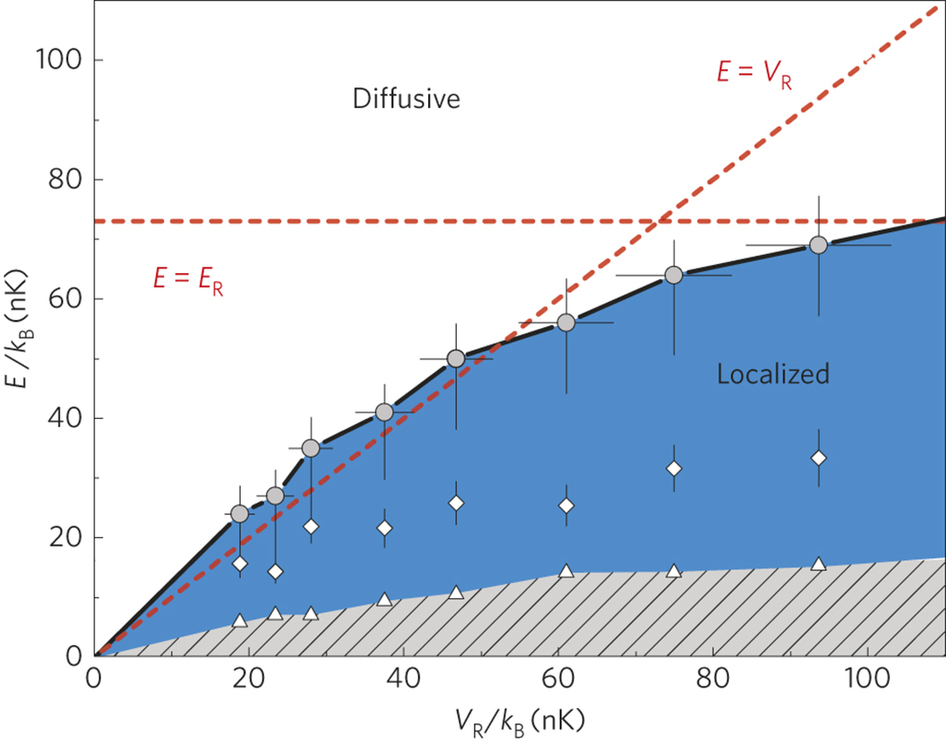 |
Anderson localization is a universal phenomenon affecting non-interacting quantum particles in a disordered environment. In three spatial dimensions, theory predicts a quantum phase transition from localization to diffusion at a critical energy, the mobility edge, which depends on the disorder strength. Although it has been recognized already long ago as a prominent feature of disordered systems, a complete experimental characterization of the mobility edge is still missing. Here we report the measurement of the mobility edge for ultracold atoms in a disordered potential created by laser speckles. We are able to control both the disorder strength and the energy of the system, so as to probe the position of the localization threshold in the disorder–energy plane. Our results might allow a direct experiment–theory comparison, which is a prerequisite to study the even more challenging problem of disorder and interactions. G. Semeghini, et al., |